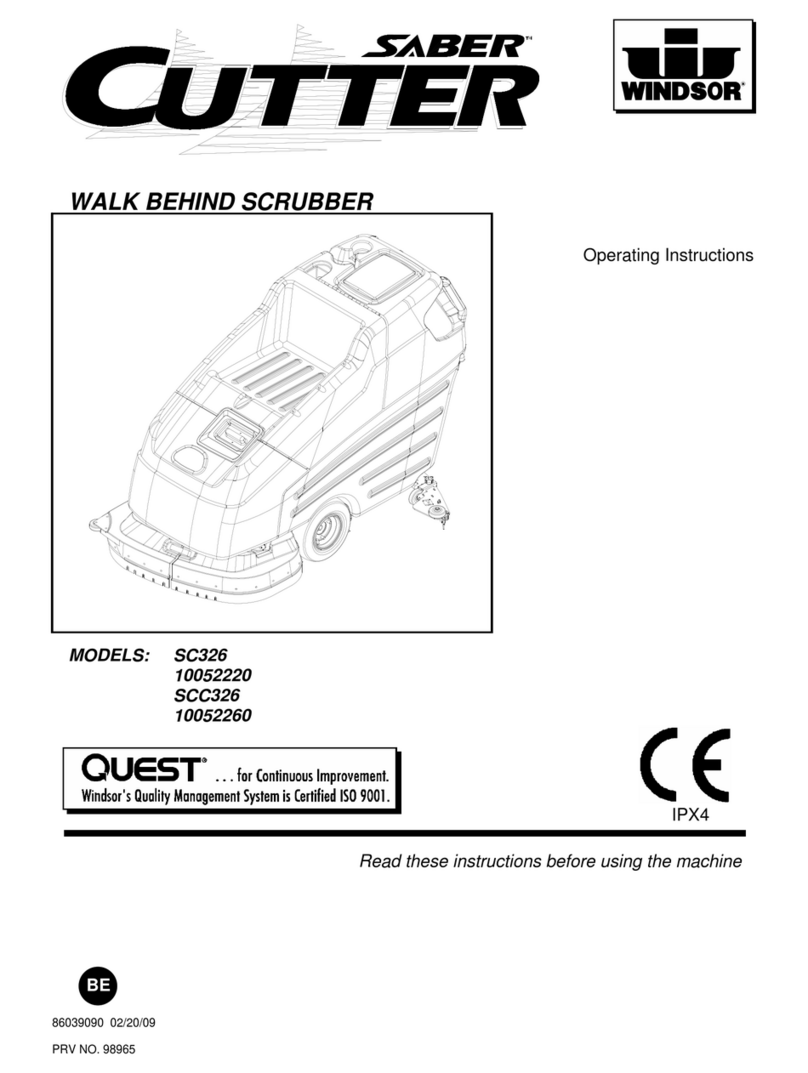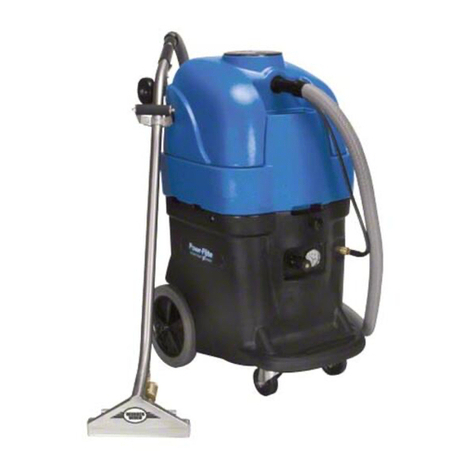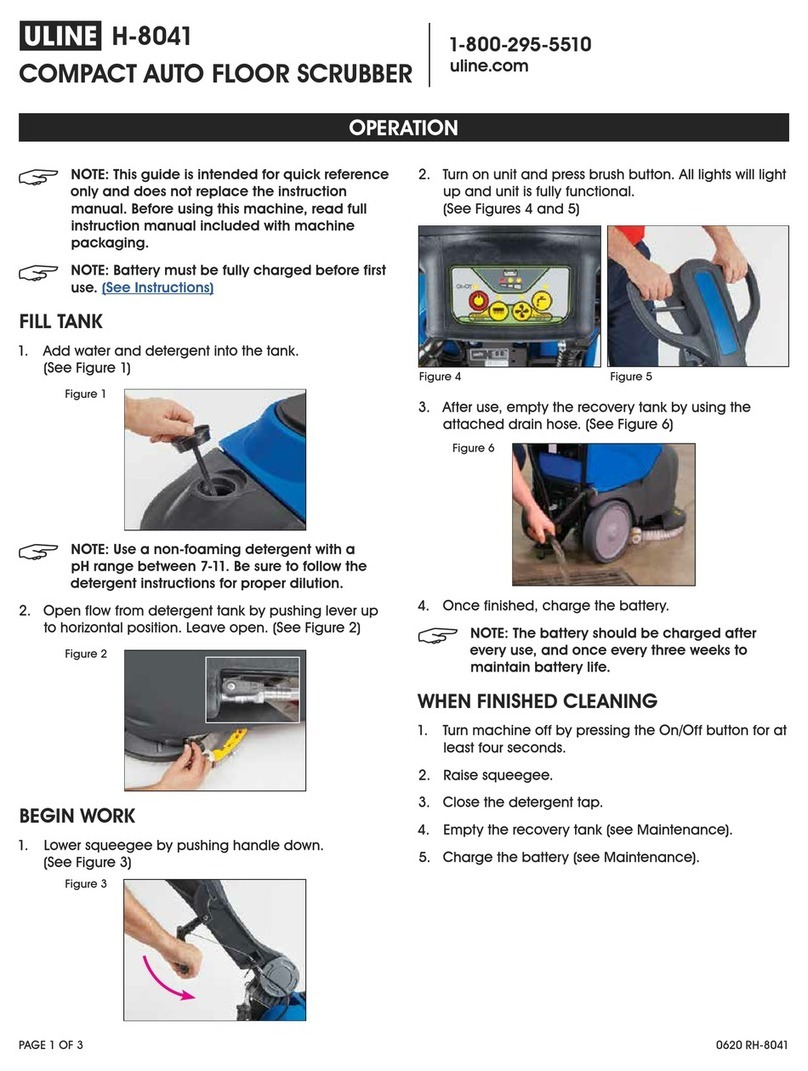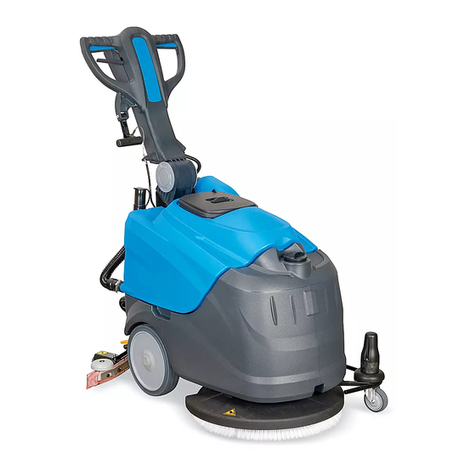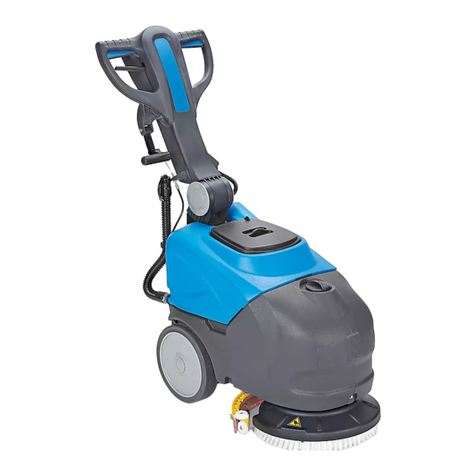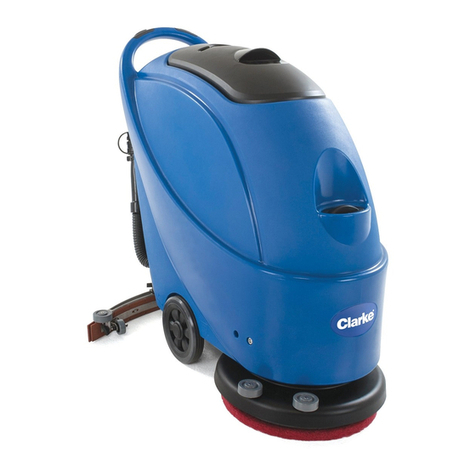
PAGE 2 OF 36 0521 IH-9424
SAFETY CONTINUED
•The machine is not intended for use by
people (including children) with reduced
physical, sensory or mental capabilities, or
lack of experience and knowledge, unless
they are supervised by a person responsible
for their safety and have received instruction
in the use of the machine.
•Never use detergents other than those
specified.
•Keep detergents out of children's reach.
In the event of contact with the eyes,
wash immediately with abundant water. If
ingested, consult a doctor immediately.
•A wide range of personal objects may cause
serious accidents. Before beginning work,
remove jewelry, watches, ties, etc.
•The operator must always use personal
protective equipment: apron or overalls,
nonslip waterproof shoes, rubber gloves,
goggles, ear protectors and mask to protect
the respiratory tract.
•Do not pick up burning or smoking material
like cigarettes, matches or hot ashes. Never
operate the machine on slopes or ramps
of more than 2°. Always maneuver with
care and avoid reversing. If transporting
the machine over ramps or steep slopes, to
prevent it from tipping over or running out of
control, completely empty the detergent and
recovery tanks and remove the batteries.
•Never park the machine on a slope.
•Never leave the machine unattended while
switched on.
•Never use the machine to transport people
or goods or to tow things. Do not tow the
machine.
•Never rest objects of any weight on the
machine for any reason.
•Do not remove, modify or bypass safety
devices (brush guards, battery covers, fuses,
electric system covers, etc.).
•Always check the condition of the brush
guard before operating the machine. If
any damage is found, do not operate the
machine. Have the guard replaced by
personnel trained and authorized by the
manufacturer.
•Never touch the brush unless the machine is
disconnected from the power supply.
•The fluids collected during use contain
detergent, disinfectant, water, and organic
and inorganic material. They must be
disposed of in accordance with current
legislation.
•Never wash the machine with water jets.
•Use only the battery charger supplied with
the machine to recharge the batteries.
•Always follow the battery manufacturer's
instructions.
•Protect the batteries from impurities such as
metal dust.
•Always keep the batteries clean and dry to
avoid surface leakage currents.
•Never rest metal tools on batteries as they
could cause short circuits and lead to
explosions.
•Never wear metal rings or bracelets when
working on batteries.
•Do not smoke, use open flames or sparks
near batteries.
•Never lift or handle batteries by their
terminals.
•Batteries must be disposed of through proper
channels and not as normal waste.
•Never attempt to remove the battery cover to
add water or acid to the cell(s) inside.
